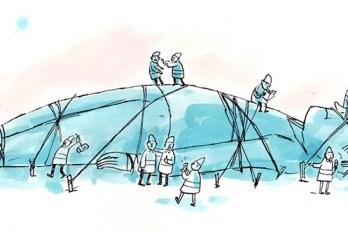My friend Dan often spends his evenings searching for sex through the screen on his phone. Like many gay guys I know, he is unencumbered by debilitating prudery or a boyfriend (I suffer from both conditions myself). He is charming and handsome enough to procure a little action in the real world if he wanted to—but Dan, like plenty of others, is permanently logged on to one online tool or another designed to help him get laid.
Gay men have always looked for sex through a filter. In the past, our hunting grounds were almost exclusively limited to designated bars, bathhouses, and empty parks. Today that collection of filters includes our laptops and phones. Neighbourhood pubs and dance clubs are steadily being replaced by chattering arenas in the cloud.
A little while ago, Dan was talking with a guy on a website called Manhunt whom he had known (through his online avatar, at least) for two years. Driven to action at last, Dan asked him out for dinner. “Sorry,” came the reply, “only interested in hookups.” Fair enough, thought Dan, and he moved along. A few weeks later, though, he noticed that the fellow had changed his profile so it now read, “Looking for a long-term relationship.” Dan rallied and asked him out again. This time, the man said he was only interested in getting together if Dan could provide an additional player for what’s known as a “tag team” event.
Dan related this to me while frowning into a cup of Earl Grey. He might have encountered such erotic flippancy in any number of off-line venues, but as we export more of our sex lives online it seems there has been a correspondent crowding of casual sexual availability (and sexual rejection, too). Since websites like Dudesnude and Manhunt picked up steam in the early 2000s, men like Dan have been able to order in their sex (or be ordered in themselves) as easily as a pizza. We are permanently ready.
For a dramatic illustration of our future sex lives, look no further than the smart phone application Grindr, launched in 2009. The app alerts men to the proximity (and sexual inclinations) of other men, not while they’re in a seedy bar, but while they’re walking their Rottweiler, or chatting with their mom at a nice café. It is convenience itself: a person’s phone is constantly replenished with a dozen miniature photos of smiling faces (or other body parts), and a fellow can click and chat with other guys, note that they’re only 100 metres away, and then arrange what was once called “a discreet encounter.” This is hardly a fringe activity: more than four million men have the app on their phones, and it’s now used in nearly 200 countries. On a single Sunday in the fall of 2012, for example, users sent 37,435,829 messages of love, lust, and denial.
Taken together, these websites and apps have made a permanent bathhouse of our surroundings. Sexual frames of mind once relegated to special environments are no longer thus bound, and so the bathhouse brain, primed for immediate satisfaction, becomes our everyday brain. If I’m sitting in a sun-dappled park reading Jane Austen and suddenly take up the idea that I would like some action right now, it’s only my own starched manners that will stop me.
The Internet’s ability to accelerate sexual pursuit, to bypass traditional courting, has plunged us into what some consider a bacchanalian frenzy. Certainly, gay men are a good group to point at if one is in a moral panic: a recent study in Vancouver found that 90.2 percent of gay guys aged thirty and over have looked for hookups online. One friend of mine, Ty, often manages his sex life from his iPad, his laptop, and his iPhone, all at once. “I’ll change my profile and my attitude and my image, based on the logic of the particular website or app,” he explained to me. “It definitely has created a kind of obsession. Not so much with the guy I’m going to meet, but with the sensation of being desired.” Ty, being Japanese, has also encountered racism online (the words “No Asians” are blazoned across some Grindr profiles). “It often feels exclusionary and injuring,” he told me. “But it’s something I cannot not want to use if I want to fuck.”
Gay male culture has evolved to be well suited to this new reality. Guys even a few years younger than me (I’m thirty-three) don’t grasp that there was a time, a very recent time, when homosexual lust was pathologized and criminalized; long before computer codes, gay men used codes of dress and speech to identify one another. Unless queer people allowed themselves to be absorbed by straight culture, they could realize no concrete gains in their relationships—there was no chance to pass on wealth or raise a child—so sex existed only for itself, and against an antagonistic world. Then, in the ’80s, via the trauma of AIDS, the invisible gay male became fully visible. Our emergence into society was accomplished by a disease that immediately shuttered what it revealed.
All of that has changed, and continues to change, but those themes of isolation and obscured connections, and not just male horniness, may explain why we are now the vanguard of the sexual-technological revolution. We know so well the transit between an anonymous search and the final meeting of strange yet familiar bodies. To us, this is not so uncanny.
That said, we’re only the first wave. Straight people are quickly remodelling their sex lives, too. Along with selling used sofas and renting apartments, Craigslist, the massive global classified website, has lively sections devoted to the proffering of sexual trysts. Neatly divided by orientation, the site’s casual encounters pages overflow with gentlemen declaring themselves “fit, hung, ready to please,” and ladies demurring, “Please have good hygiene.” Meanwhile, Chatroulette links random strangers from Beijing to Bogotá via webcam feeds—which inevitably led to the ubiquitous roulette flashers, men who masturbate before the camera in the hopes of titillating/appalling female viewers. An RJMetrics report stated that one in eight users on Chatroulette is broadcasting R-rated content.
These forums may be tawdry and voyeuristic, but even innocuous connections made on Facebook often belie a sexual pursuit (its progenitor, Facemash, was a game in which Harvard students rated their classmates’ attractiveness). Explicitly or otherwise, mainstream technologies are now integral to the game. Teenagers send homemade porn to one another via their phones, while apps like Snapchat encourage risqué photo sharing, because they promise to automatically delete images—although, naturally, this turned out to be untrue. Even the most public of broadcast technologies, Twitter, can produce a sex scandal when a figure such as former US representative Anthony Weiner decides to send explicit photos of himself to followers of interest.
This is not a question of simply transferring off-line behaviour—meeting via newspaper classifieds, for instance, or picking up a stranger in a bar—onto the Internet. Yes, we’ve turned every new broadcast technology into a beacon for the lonely (the first printed personals were created a mere fifty years after the invention of the modern newspaper), but no, the Internet is not just an extension of what came before. Surveys conducted in 1980, and again in 1992, demonstrated that less than 1 percent of the US population was then meeting through newspaper ads. Today one in five relationships begin online. According to a 2010 BBC World Service report spanning nineteen countries, nearly a third of us now consider the Internet a decent place to find a mate.
For many, the days begin and end with a consoling look at a phone or a laptop. We are on constant alert for connection—and sexual connection is prime. Our technologies offer something irresistible: a shortcut between desire and consummation. They grant us twenty-four-hour access to an alternately frustrating and exhilarating pool of sexual potential, and a far larger scope of search. Online connections are, in sum, fast food and essential nourishment in one. But amid this smorgasbord of sexual broadcasting, emboldened as we are by the possibility of getting what we want whenever we want it, I wonder whether all of these tech-derived sexual gains eclipse the notion that something essential has been taken away.
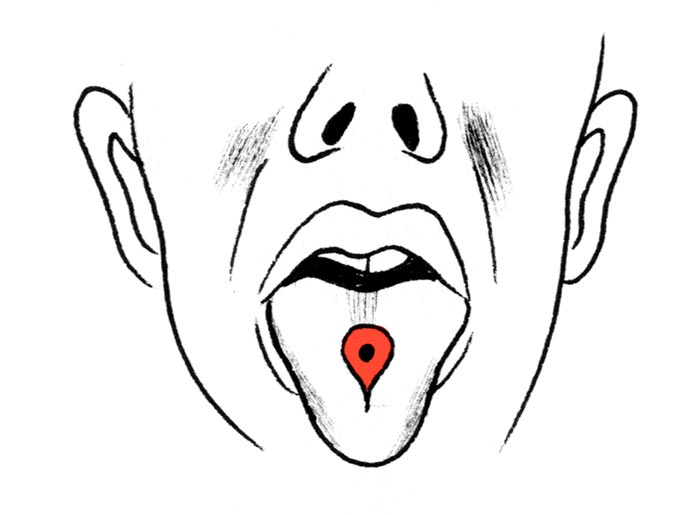
In 1965, Lewis Altfest, an accountant, and his computer whiz buddy, Robert Ross, created Project TACT (Technical Automated Compatibility Testing), a commercial dating service that, like the descendants it would spawn, relied on the inputting of personal information. Customers would pay $5 and fill out a questionnaire, which was then run through an IBM 1400 Series computer equipped with an algorithm that enabled Altfest and Ross to find matches for lonely hearts.
They were keenly aware that computer-aided dating could be seen as both nerdy and déclassé, so for months they walked the streets of New York’s Upper East Side, scouting for upscale singles. To doormen, they explained that they were working on a graduate research project; once shown into the lobby, they made their way to the wall of mailboxes. Whenever one had two different names on it, they assumed the occupants were single and added those names to their list. “It was a tailored approach,” Altfest told me. “If I do say so myself, it was very sophisticated.”
Once they knew who was rich and single, they declared their TACT program an “East Side experiment,” something that only residents of the right neighbourhood could join. “We restricted it to the poshest area in the city, and sent personalized invitations to all the single people there. We said, This is an experiment, and you’d be doing us a favour if you participated. You obviously don’t need a date. You’re simply helping us out.” The usual return on a direct mail advertising program like that is 1 percent; Altfest and Ross got close to 25 percent.
The race to translate human desire into ones and zeros had begun. At the same time, a group of Harvard kids was pushing Operation Match, which used computers to identify compatible couples from a bank of college students who had self-rated their attractiveness and intelligence and provided a list of qualities they were seeking in a partner. Every new communication technology—from the printing press to the telephone—has been harnessed by the horny people of the world, but those students with their lists of tech-sanctified lovers were experiencing something quite new. Apparent in the infancy of online dating were the first intimations of a population in love with off-loading romantic decisions to a yenta algorithm. What a strong impulse that would turn out to be: the desire to have one’s desires directed.
Emerging as it did during the sexual revolution of the ’60s, TACT played off fresh, even courageous social mores. Dating, courtship, and sex were all becoming more liberally defined at the precise moment when computers were broadening options for interpersonal connection. By the early ’90s, AOL introduced chat rooms where users could cyber-flirt; soon after, sites like Match.com created mathematical formulas to pair singles up. The romantic revolution would deliver us from the silencing odds of our old social circles into a highly managed crowd of potentials.
The advent of GPS-enabled phones has made it possible to take the search outside and into real time. To get a picture of the burgeoning marketplace for online hookups, I sat down to lunch with Morris Chapdelaine, a sexy, muscled, fast-talking man, about as far from tech nerd as one can get. He is the executive editor of a new app for gay men called GuySpy, which, from its headquarters in White Salmon, Washington, welcomed its millionth user this June.
GuySpy, like Grindr, allows men to find each other using GPS, but it fashions itself as a social network, too, complete with news stories, blogs, and a community of users. It also pushes established privacy boundaries by accessing mapping systems and pinpointing the exact street corner where your soon-to-be lover is loitering. Midway through our meal, Chapdelaine had his phone out and was flipping through nearby men. “He’s cute…He’s cute…”
The point is unbridled freedom and access, commensurate with the expanding freedoms and access enjoyed by gay men in general. “Gay bars today,” said Chapdelaine, “they aren’t even trying. They just paint it black, offer some bad drinks. And you know what? They’re over. Guys want to go to the nice bars, the nice restaurants. You want to be able to hang out anywhere with your straight friends. This app lets them do that.”
He’s on to something: I spoke recently with Terry Trussler at Vancouver’s Community-Based Research Centre, whose latest study compiled surveys from 8,600 gay men. He found that nearly three-quarters of young men are dissatisfied with designated gay spaces, preferring to roam outside village ghettos. Thirty-six percent of those under thirty used their cellphones to find casual sex (compared with 18 percent of older men). According to Trussler’s report, “Internet and smart phones, not bars and cafés, have become the main means of connection between men under thirty.”
Traditionally, when gay men left their ghettos, they were effectively neutered. You couldn’t know who was gay at a mainstream venue, so sexual advances became problematic at best, and a physical risk at worst. Today when gay men go out into the larger world, argues Chapdelaine, technologies like GuySpy point out the queer potential of any space. In other words, you can make a four-person gay bar out of a forty-person restaurant, but only, of course, if everyone is using the same technology. By this logic, mobile sex apps could be something more than erotic fast food. Their use could be a revolutionary act, a way for sexual minorities to stake out territory previously denied to them.
Why stop there? Apps could inject this revolutionary attitude toward sex—overt, open, casual—beyond gay culture and into the mainstream. The question is, can the bathhouse brain work for straight people (and lesbians)? Would this approach to sex even be tenable? According to Chapdelaine, it is inevitable; he argues that his app is the future, like it or not: “Ten years from now, this is going to be an integral part of everyone’s life, gay or straight.”
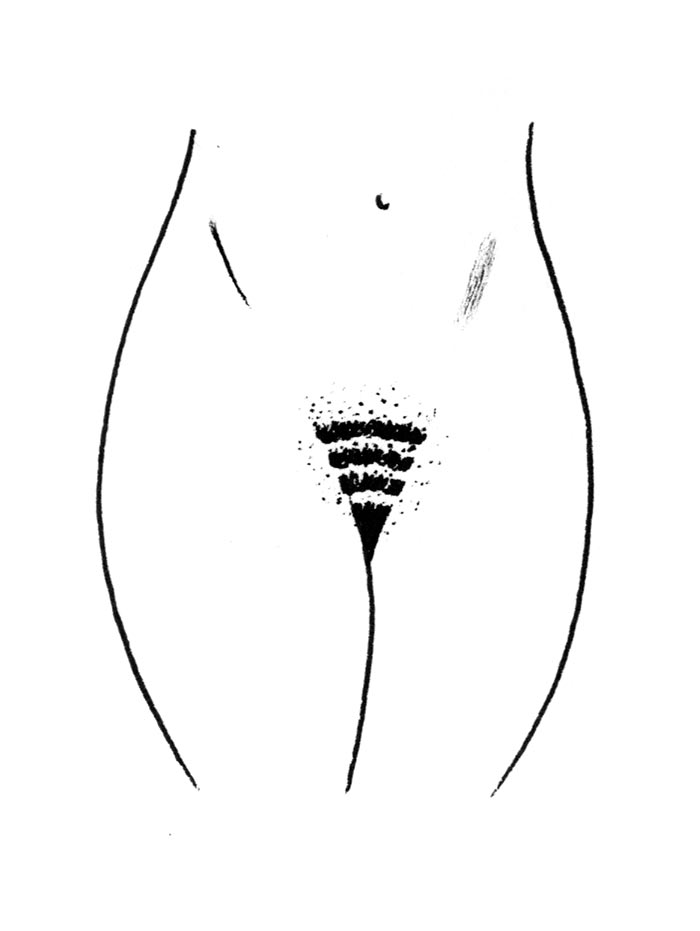
This brings us to the heterosexual hitch: the female question. Do women want this revolution? In 2011, American neuroscientists Ogi Ogas and Sai Gaddam published their analysis of the online behaviour of more than 100 million men and women around the world (eat your heart out, Alfred Kinsey). Ogas says that, indeed, women’s preferences are why heterosexual sex culture is so different from gay men’s. “Quite frankly,” he told me, “an app like Grindr shows us what all men would do if women weren’t involved.” His position seems to be confirmed by examples of Grindr-esque efforts where men are not involved at all: Qrushr Girls, a lesbian variation of the app launched in 2010, attracted a mere 50,000 users in three months, then failed.
This runs counter to the anecdotes I hear from my frankly game lesbian friends. Over lunches and dual-mommy baby showers, I’ve been told how they are just as libidinally manic as any man, but it would be a disservice to pretend that women across the sexual spectrum don’t deal with a far more fraught experience of casual sex. For starters, there is the long-standing censure of female sexuality. Then there are the more concrete dangers of picking up a guy from the bar or the Internet, the ambient threat of rape and other forms of violence. There are STDs (women are more likely to be infected with HIV by men than vice versa) and unwanted pregnancies. Not until the ’60s, when the birth control pill was introduced and then later when abortion was decriminalized, could most women maintain control of their own reproduction, and thus manage a casual sex life of any sort.
Besides these barriers, reports of the nonexistence of the female sex drive do appear to be exaggerated. In his much-gabbed-about new book, What Do Women Want?, Daniel Bergner outlines the emerging scientific truth that women, far from being the prudes that a male-dominated academy has imagined, are just as inclined to promiscuity as men are. Indeed, it appears that the old story about women being uninterested in sex is more related to the fact that they tire of monogamous relationships more quickly than men do. Women, by this reckoning, are actually great candidates for apps like Grindr and GuySpy. It may be societal pressures and safety threats alone, rather than an innate frigidity, that keeps women from hooking up online.
Whatever engineered them, the blockades between women and casual sex encounters have thus far kept online technologies from becoming ubiquitous for straights. Attempts to create hookup apps for heterosexuals are almost platonic by comparison. One, called Blendr (yes, produced by the folk behind Grindr), is making a go, with more than 182 million members, except that it seems ashamed of its intentions. It bills itself as “a great place to meet fun new people,” which would be a great tag for a location-based social app for kindergartners, but less so for consenting adults in search of a quickie.
On Grindr, a photo of a man’s naked torso is accompanied by blunt descriptions of his weight, preferred sexual position, and HIV status. When I scour the Blendr site, though, I learn that “Brittany” likes Hugo Boss and the movie Titanic; and “Anna” wants to go rollerblading with a guy who is older than twenty-five. The most sultry posting I can find is from “Preal” (a snowboarding fan), who “wants to cuddle with a girl, 25–30.” So much for Blendr’s casual sex life.
Perhaps future generations of heteros will be more sexually adventurous. At least there seems to be a growing comfort with announcing sexual desire. One study of nearly a thousand Texan high school students found that more than a quarter had used their phones to send someone a naked photo of themselves; that rose to nearly 50 percent when the question was posed to those eighteen and older. (On Grindr, too, the digital natives form the largest user group, and are most comfortable with enabling the app’s geo-location software.) But that’s not the whole picture.
Reading media reports of grade eight children sending each other naked selfies leads to the gut feeling that digital life must be an invitation to a hyper-sexualized reality. However, gossipy accounts of adolescent sex lives do not necessarily translate to what is actually going on. Statistics Canada conducted a National Population Health Survey in 1996–97, immediately before the Internet’s proliferation, and followed with similar surveys in 2003 and 2005, after teenagers had gained access to complex online worlds. A comparison shows that post-Internet teens were having less physical sex than their pre-Internet peers: the number of adolescents who reported having intercourse dropped from 47 percent to 43. A more recent StatsCan study found that between 2003 and 2009–10, there was a negligible change in the number of sexually active young people. The only significant development is that those who are having sex are now more likely to use condoms, and the average age when we lose our virginity (seventeen) has remained about the same for twenty years. The next generation, then, may be producing more sexual signals without actually having more sex.
It remains to be seen whether straight people will catch up to gay culture. For now, the gap remains wide. The majority of gay male personals on Craigslist are hookup ads, which is only true of this demographic. Still, a small portion of straight people have had their taste of the new zeitgeist. I chose a typical day (Tuesday, November 20, 2012) and a typical American city (Louisville, Kentucky, population 1.2 million) to check out heterosexual posts on Craigslist’s casual encounters pages. Eighteen were from women, and 230 were from men, meaning almost thirteen times as many men were looking for casual sex. While both men and women used graphic language in their ads, about one-quarter of the men attached pictures of their genitals, while none of the women included photos.
Even if the numbers don’t balance out yet, it is refreshing that some straight people can take so enthusiastically to the waters of online hookups. What’s unclear, though, is whether all of this sexual activity (or posturing, anyway) is making us happier and more satisfied. As we fill in the longing that characterizes so much of history’s erotic art, love songs, and poetry with the constant connection of digital technology, what fine yearnings have we made extinct? Craigslist, sexting, and porn are superb dismantlers of sexual mystery, but I don’t know that desire without mystery, without absence, is quite enough for me.
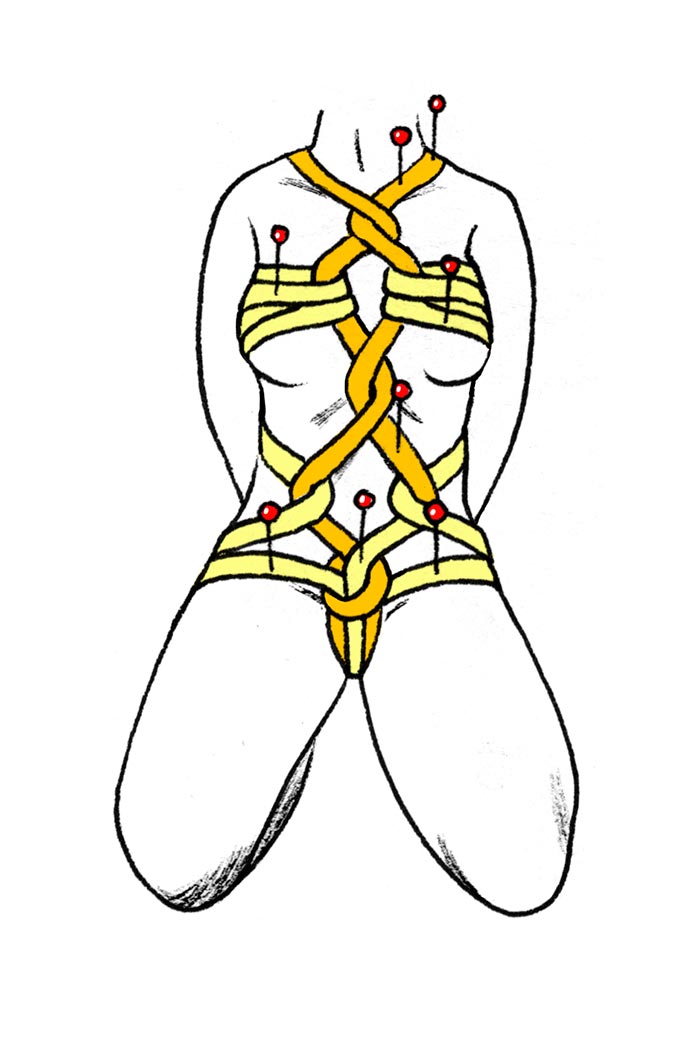
Absence is difficult, even tortuous, it’s true. The alternative, the online world we have erected to fill it, is uniquely adapted to excite our bodies and minds. This is evident in the physiological responses we have when our electronic devices indicate signs of connection. When we receive a text message, our heart rate increases; 83 percent of us, according to one study, even hold our breath. As Gary Wilson pointed out in Psychology Today in 2011, the dopamine rush we get from viewing porn online is often greater than that induced by real sex, or even old-fashioned magazine porn, because all of that clicking and scrolling exploits the searching and seeking drive that served our hunter-gatherer ancestors. “The Internet makes possible a never-ending stream of Tabasco sauce,” he notes, “in the form of dopamine spikes.”
Beyond these dizzying highs, Paul Eastwick, a psychologist at the University of Texas, points out a more insidious problem: our own misconceptions. While discussing matchmaking sites, he explained to me that “the things that appeal to us in an online profile are not what appeals to us face to face. We’re very good at finding profiles that match our idea of what we’re looking for, but people aren’t terribly good at knowing what they actually want, so on average you’re going to be disappointed.”
That disappointment makes sense when we consider the simplicity of the game: “You’re making this cool analysis of a person based on how they look and a list of interests they’ve posted on their profile. But a picture won’t tell you how it feels to be with them; and similar interests, it turns out, aren’t at all a good predictor of whether a relationship will last.” Furthermore, the very volume of choice is itself a problem. “Often,” Eastwick told me, “our ability to stick with a single partner is actually undermined by taking the experience online. You’re presented with all of these profiles, and the sheer number is problematic. It keeps you from engaging and can make it difficult to get to date five.”
Of course, Eastwick is assuming you want to get to date five. Plenty of us go online to shed the shackles of traditional dating and relationship expectations. Consider AshleyMadison.com, which helps its 19 million users arrange extramarital affairs. If the business of online hookups has a bogeyman, it is Noel Biderman, president and CEO of Toronto’s Avid Life Media Inc., which owns AshleyMadison.com and half a dozen other sites that unabashedly satisfy the needs of specific populations: CougarLife.com, for example, helps young men meet divorcees and single moms, while EstablishedMen.com helps “perfect princesses” find older wealthy guys.
The sites’ traffic charts the ebb and flow of secret human appetites: Monday mornings are the busiest time at AshleyMadison.com, as disappointing weekends lead to cheating; late Saturday and Sunday nights are busiest for CougarLife.com, as drunken older women (and drunken young bucks) return home, alone, from the bar; and every dating and casual sex site sees a major spike the day after New Year’s, as the world’s population makes a bleary resolution that surely it can do better.
While we spoke, Biderman moved about his twelfth-floor office at Toronto’s RioCan Yonge Eglinton Centre (which has become a social media hub, housing outlets of Facebook and LinkedIn as well). He is a charismatic man, smart and guy-ish. His rationale, surprisingly, matches the harm reduction argument used to justify safe injection sites: whether you like it or not, this activity is going to happen, so we might as well mitigate the risk. “Before the Internet, most affairs had to be with someone in your circle, someone at work or your sister’s husband,” he said. “That’s way more damaging.”
I asked him where online hookup technology is headed, and he laid out a bold vision. “We’re going to have to build something that goes beyond self-representation,” he explained, citing the myriad ways our subjective hang-ups keep us from accurately representing ourselves. Biderman’s argument, akin to Eastwick’s, is that we don’t know, or won’t admit, what we really want. Instead, we should open up access to the minutiae of our lives (your web search history, that video you emailed your dad, the music you listen to) so helpful algorithms can do their job properly.
“If we can use science to make our relationships more successful, then that’s a positive,” he told me. “We need to get over this idea that infringing on privacy is such a problem. Does it matter if a computer knows what you watch on television? ”
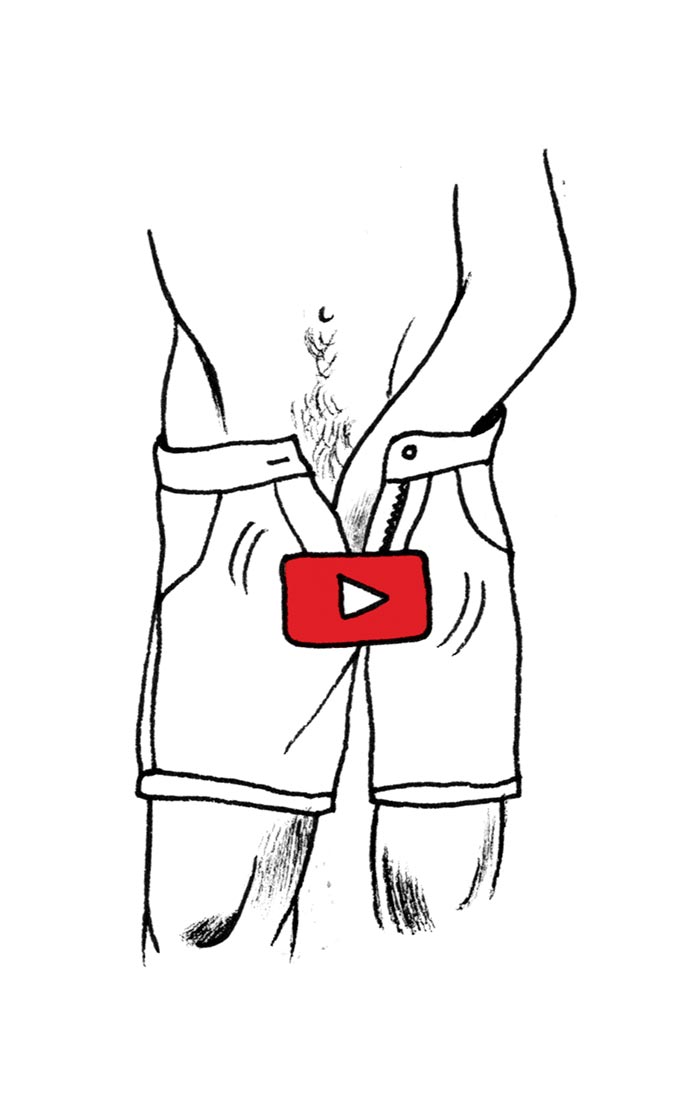
Idon’t care who knows that I’ve seen all of Modern Family twice, but I do care very much whether my love life is crowd sourced. Yet how could it not be, the more I become enveloped by online processes? If all of us do end up browsing for sexual partners the same way we hunt for a decent sushi joint, though, will our true sexual potential have been revealed by the magic wand of Grindr and the rest? Or will it have been masked by the static of the medium itself? Will the omnipresence of choice, in other words, block us from the absences that so often fuel our desires?
What we lack, now, is lack. The Greek word “eros” denotes want, lack, and “desire for they who are absent.” Perhaps some innate quality of our search for sex and intimacy demands the separations that precede our meetings. I’m not arguing for abstinence here, nor even for monogamy, but it seems clear that our online technologies are pushing us toward a state of constant access, and that is not necessarily the only ingredient in erotic desire.
Here is Simone de Beauvoir on chivalric love: “The knight departing for new adventures offends his lady, yet she has nothing but contempt for him if he remains at her feet. This is the torture of the impossible love.” Tomorrow’s lovers will have a hard time understanding that. All of their knights will sit, forever, at their feet.
Gay or straight, in our sex lives we feel most intensely the distance between online abstractions and our lived reality. The crowded, sense-depriving focus of an online encounter is the absolute opposite of the spare, sense-gorged experience of cruising the sidewalk at dusk, or chatting up a stranger in a club. And isn’t it often a person’s weird, unaccountable qualities (like their Woody Woodpecker laugh) that charms us, drawing us to those who might not even be our type? Will future generations—mired in ever-more-complex variants of perma-readiness—find it difficult to experience these unexpected attractions for themselves?
We might grumble to our grandchildren about the days when people picked up lovers from sparsely populated bars with the same antiquarian fustiness a fifteenth-century scribe must have felt when Gutenberg’s printing press spewed forth those millions of bound volumes. There is a sad, rare quality to this nostalgia: we will only lament what was lost for this tiny moment in time. None of us ever asks for our deprivation back.
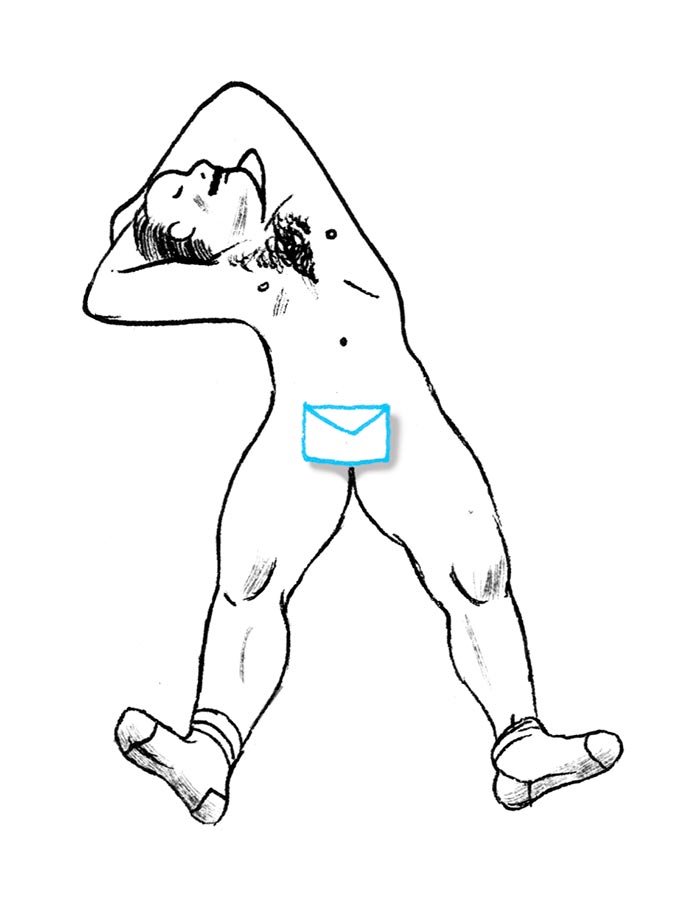
It would be disingenuous to omit my own sexual career from all of this. My experiences are timid, but, like 55 million others, I broke down one lonely evening and created a profile on the dating site Plenty of Fish. The spotty results bottomed out with an ornery graduate student whose photos were the most generous thing about him.
After I had bought us a couple coffees, we started walking the seawall bordering Vancouver’s Stanley Park, and he grew increasingly irate at the confusion of bodies around us. A child in its mother’s arms let out a holler of joy when a flock of birds flew by, and my companion pulled a sour face.
“Don’t you hate that sound? ” He shuddered.
I looked at him. “The sound of children laughing? ”
“Exactly.”
There was a pause. Then, casting my eyes out over the crowd that swarmed the seawall, I gave a little jump and pretended that my phone had started vibrating in my pants. “Hello? ” I said to nobody. “Really? But I’m in the middle of a date.” I looked at him while I held the dead phone to my ear. “Okay,” I said. “I’ll be right there.”
“I think I made a bad impression,” he huffed as we hurried back into town.
“No, no,” I lied. A moment later, as he went in for a hug, I looked down at my phone again. “I have to…” but all I could manage was to hold it up as though the thing itself were a vague yet unimpeachable excuse.
Later that week, in a moment of melancholy, I found myself creating the sort of slapdash artwork that non-artists sometimes make. I tore from a book of Pablo Neruda poetry several short love poems, which I then stapled together, making a long scroll that I could nail to the wall by my computer. On it I recorded, in thick black marker, the messages I was receiving from suitors on Plenty of Fish. Neruda would begin, “Thanks to your love a certain solid fragrance, risen from the earth, lives darkly in my body…” and a Plenty of Fish suitor would conclude, “’Sup, cute pics.” The juxtaposition depressed me in a satisfying way, and I kept the thing hanging there to remind me of what I was missing.
A week into that staring, I went against my better judgment and made another online date, this time with a guy called Kenny. Under Likes, he had written: This American Life, animation, climbing. I like those things, too, but by then I had learned to expect that the person I was about to meet had little to do with the avatar I had made a date with.
We settled on beers at a swank place in Gastown. “Your photos were dark,” said Kenny as I sat down. This shocked me, because I hadn’t considered that others might feel fooled when they met me; somehow, I never thought of my own online persona as a ploy. I could see the man before me adjusting his idea of “Michael” into a breathing, broken creature. Meeting an online acquaintance in person is always an exercise in disillusionment (perhaps the photo is old, or softly lit; perhaps the baseball cap strategically covers a bald spot). In old-fashioned meetings, you never have the opportunity to indulge in idealized visions of the person until you form them yourself, in a love-addled haze.
Anyhow, Kenny and I chatted over a flight of European brews and a couple of soft artisanal pretzels—about what, I have no recollection. My only distinct memories are: his comment about my pictures; the moment he got up and asked to switch seats so he could make sure some homeless guys didn’t steal his bike; the pressure of his hand on my shoulder as we shimmied past each other around the table; and, later, out on the darkening sidewalk, a hit of soap and shampoo as we went in for a goodbye hug (no kiss).
Like my entire generation, I seem to be drawn toward the Internet’s fluttering promise of connections and then repulsed by it, in equal measure. I feel that in the end, the Internet will win. On my solo walk home—after I left the man I now call my partner—I might have enjoyed the chance to reflect on his charms, or to run our conversation over again in my head, committing to memory his favourite beer, the colour of his eyes. Instead, I clutched at the phone in my pocket, hoping for any slight vibration.


